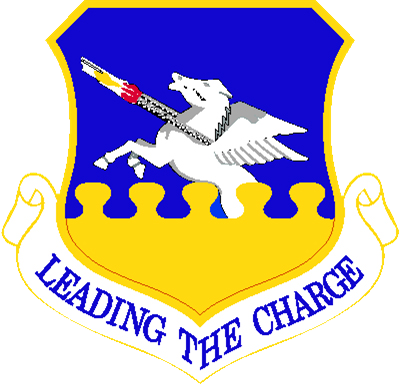The 51st Fighter Wing, headquartered at Osan Air Base, Republic 
of Korea, provides combat ready forces for close air support, air strike control, forward air control-airborne, combat search and rescue, counter air and fire, and interdiction in the defense of the Republic of Korea. The wing executes military operations to beddown, maintain and employ follow-on forces for the combined arms base that includes three major flying tenants and large multiservice fighting units. The 51st FW was activated on Aug. 10, 1948 at Naha AB, Okinawa, and was redesignated as the 51st Fighter Interceptor Wing on Feb. 10, 1950. During its 63-year history, the 51st FW has been redesignated six times; and located at six different bases in the Pacific Theater.
Korean War highlights
- Moved from Naha AB to Itazuke AB, Japan, on Sept. 22 1950 with two F-80C combat squadrons and support element for combat operations over Korea
- Deployed to Kimpo Airport, Seoul, ROK, in October 1950
- 51st FIW pilot credited with world's first jet air-to-air aerial victory on Nov. 8, 1950
- Chinese Communist Forces enter the war in late October 1950; forced withdrawal of UN Forces from North Korea
- 51st FIW redeployed to Itazuke AB in December 1950, and then to Tsuiki AB, Japan, in January 1951
- From Sept. 22 1950 to Nov. 19 1951, 51st FIW F-80Cs flew 17,551 sorties with pilots claiming to kill more than 22,000 enemy troops, and destroying 7,492 buildings, 2,108 vehicles, 539 railroad cars, 283 gun positions, and 90 tanks
- Converted to the F-86E Sabre from Nov. 20-30, 1950; New mission was air superiority
- Flew first combat mission on Dec. 1, 1951 with first MiG-15 aerial victory on Dec. 2, 1951
- Began staging combat sorties from Suwon AB in May 1951
- Redeployed to Suwon AB, ROK, between May and October 1951; Remained at Suwon AB through Aug. 1, 1954 when it returned to Naha AB
- 14 wing pilots became Aces; Capt. Joseph McConnell, Jr. became the leading U.S. Air Force Ace of the war with 16 aerial victories
- Pilots flew 28,427 F-86E sorties from December 1951 to July 1953; they recorded 306 MiG-15 aerial victories; 51st FIW had 308 total MiG-15 aerial victories (including two by F-80C pilots)
Major operations after Korean Armistice of July 27, 1953
- Deployed F-86Fs to Taiwan to support Nationalist Chinese forces during Taiwan Strait Crisis of 1958
- Deployed F-102As to Philippines and South Vietnam following Gulf of Tonkin Incident in 1964
- Deployed F-102As to Suwon AB during Pueblo Crisis of 1968; detachment operated from Suwon AB until May 1970
Major uses during Cold War and Vietnam War
- Flew F-86s in support of Nationalist Chinese Forces during Taiwan Strait crisis of 1958
- Deployed with F-102s to Philippines and South Vietnam following the Gulf of Tonkin incident in 1964
- Deployed to Suwon AB with F-102s during Pueblo crisis of 1968, detachment established at Suwon and stayed until 1970
Wartime achievements/honors
World War II:
Bestowed with three WWII streamers (from 51st Fighter Group):
- India - Burma (1942-1945)
- China Defensive (1942-1945)
- China Offensive (1945)
Korean War:
Earned two Republic of Korea Presidential Units Citations and nine campaign streamers during Korean War
- United Nations Offensive (Sept. 16 - Nov. 2, 1950)
- Chinese Communist Forces Intervention (Nov. 3, 1950 - Jan. 24, 1951)
- First United Nations Counteroffensive (Jan. 25 - April 21, 1951)
- Chinese Communist Forces Offensive (April 22 -July 8, 1951)
- United Nations Summer-Fall Offensive (July 9 - Nov. 27, 1951)
- Second Korean Winter (Nov. 28, 1951 - April 30, 1952)
- Korea Summer-Fall, 1952 (May 1 - Nov. 30, 1952)
- Third Korean Winter (Dec. 1, 1952 - April 30, 1953)
- Korea, Summer-Fall 1953 (May 1 - July 27, 1953)
- Two Republic of Korea Presidential Unit Citations (Sept. 20, 1950 - June 30, 1951) and (July 1, 1951 - March 31, 1953)
Peacetime:
- One Republic of Korea Presidential Unit Citation (Aug. 19-20, 1972)
- 14 Air Force Outstanding Unit Awards (AFOUA)
Significant Mission Changes/Aircraft since Korean Armistice
- Continuing presence on Korean Peninsula since Nov. 1, 1971
- 51st Air Base Wing activated Nov. 1, 1971; second time "51st" did not have a combat mission
- 51 ABW redesignated 51st Composite Wing (Tactical) on Sept. 30, 1974 with new combat mission (F-4E/OV-10A)
- 51 CW (T) redesignated 51st Tactical Fighter Wing on July 1, 1982 (A-10A/F-4E)
- Converted from F-4E to F-16C in August 1988
- Added theater airlift mission in 1992 (to 2007) with C-12F; added air rescue mission in 1993 (to 1996) with HH-60G
- Converted from A-10A to A-10C from March 2010 to March 2011
- Flew 15 different type of fighter aircraft since activation; current aircraft inventory includes the A-10C and F-16C/D
Mission
Defend the base, execute contingency operations and sustain the force.